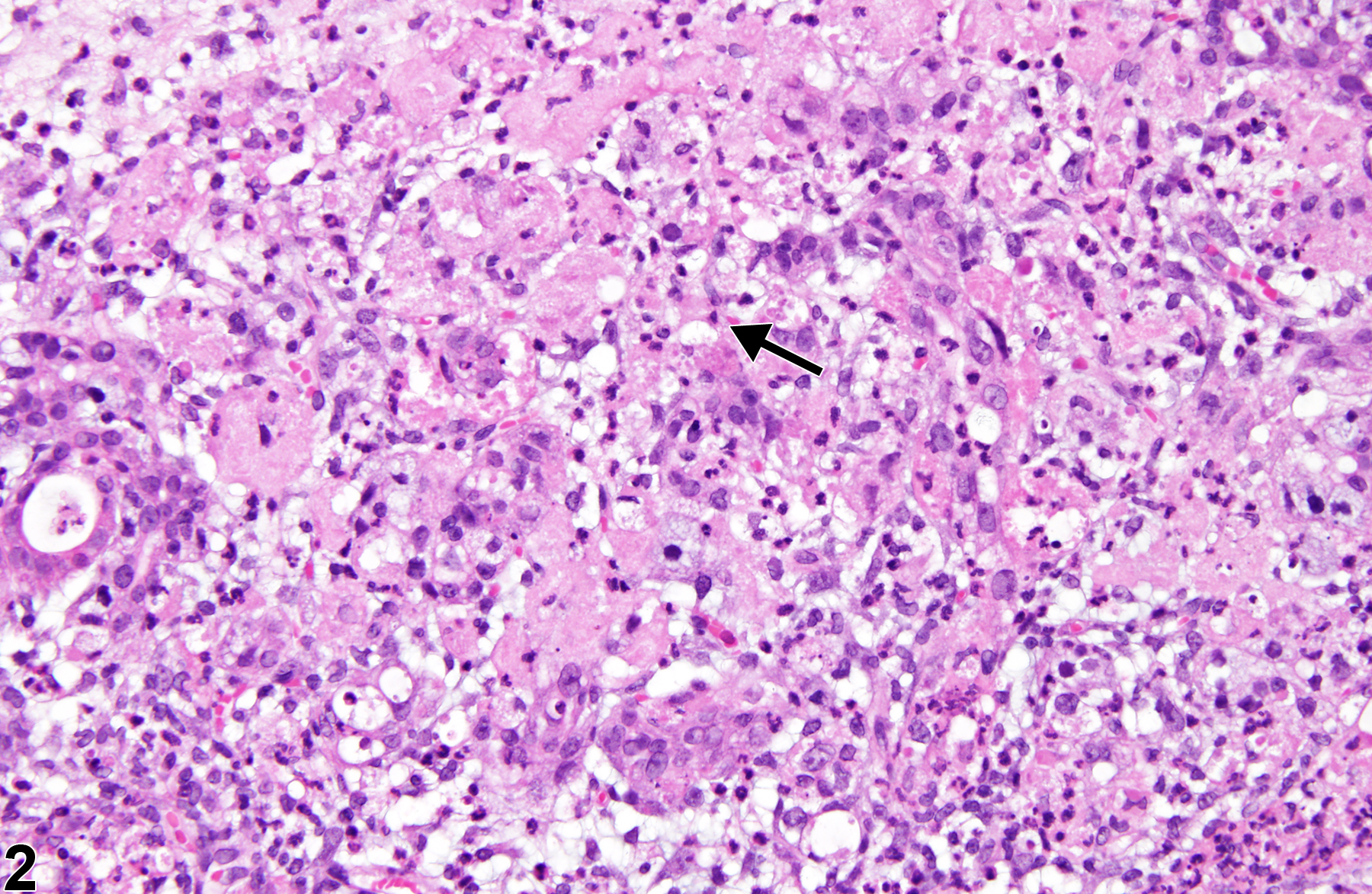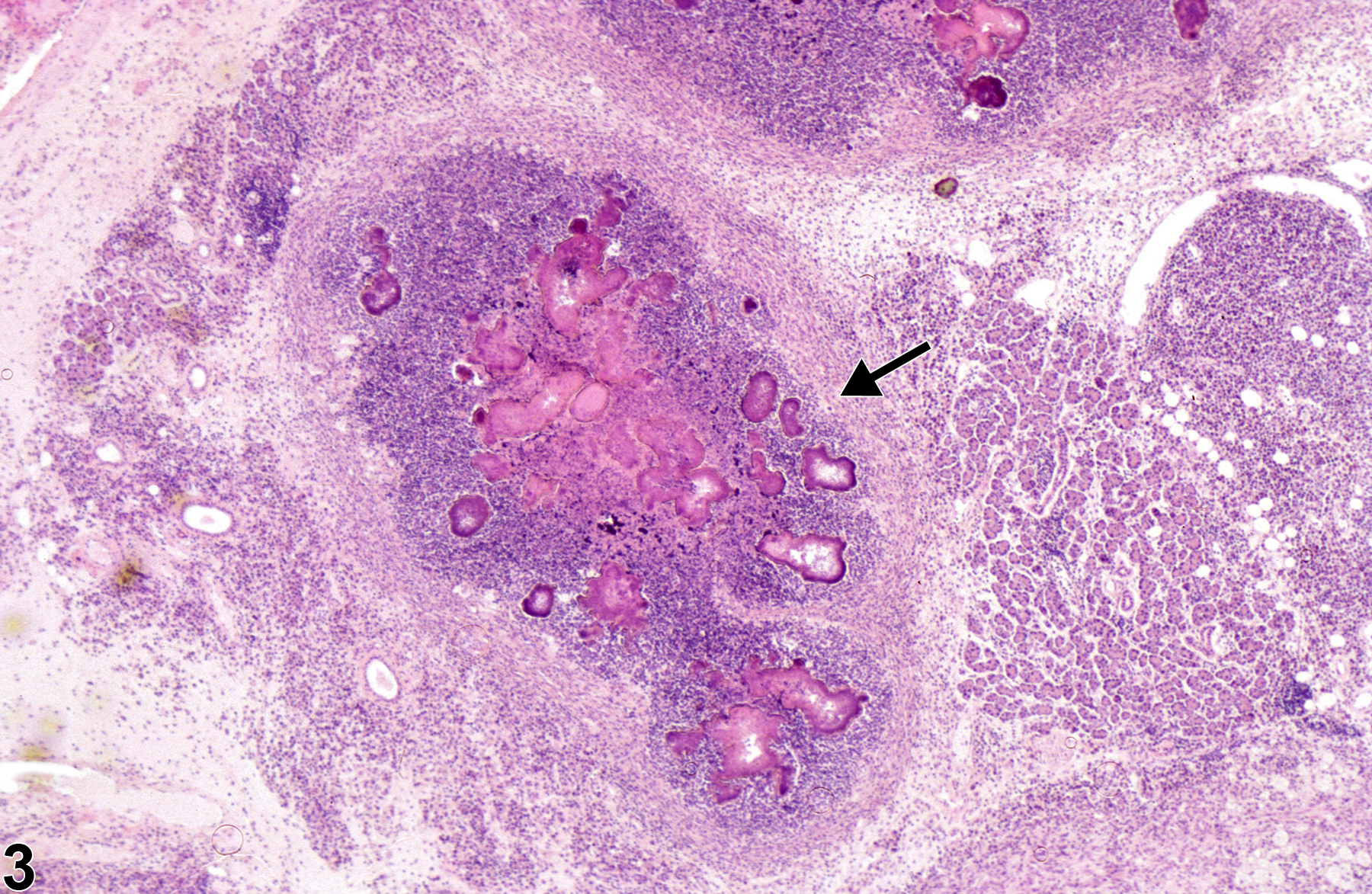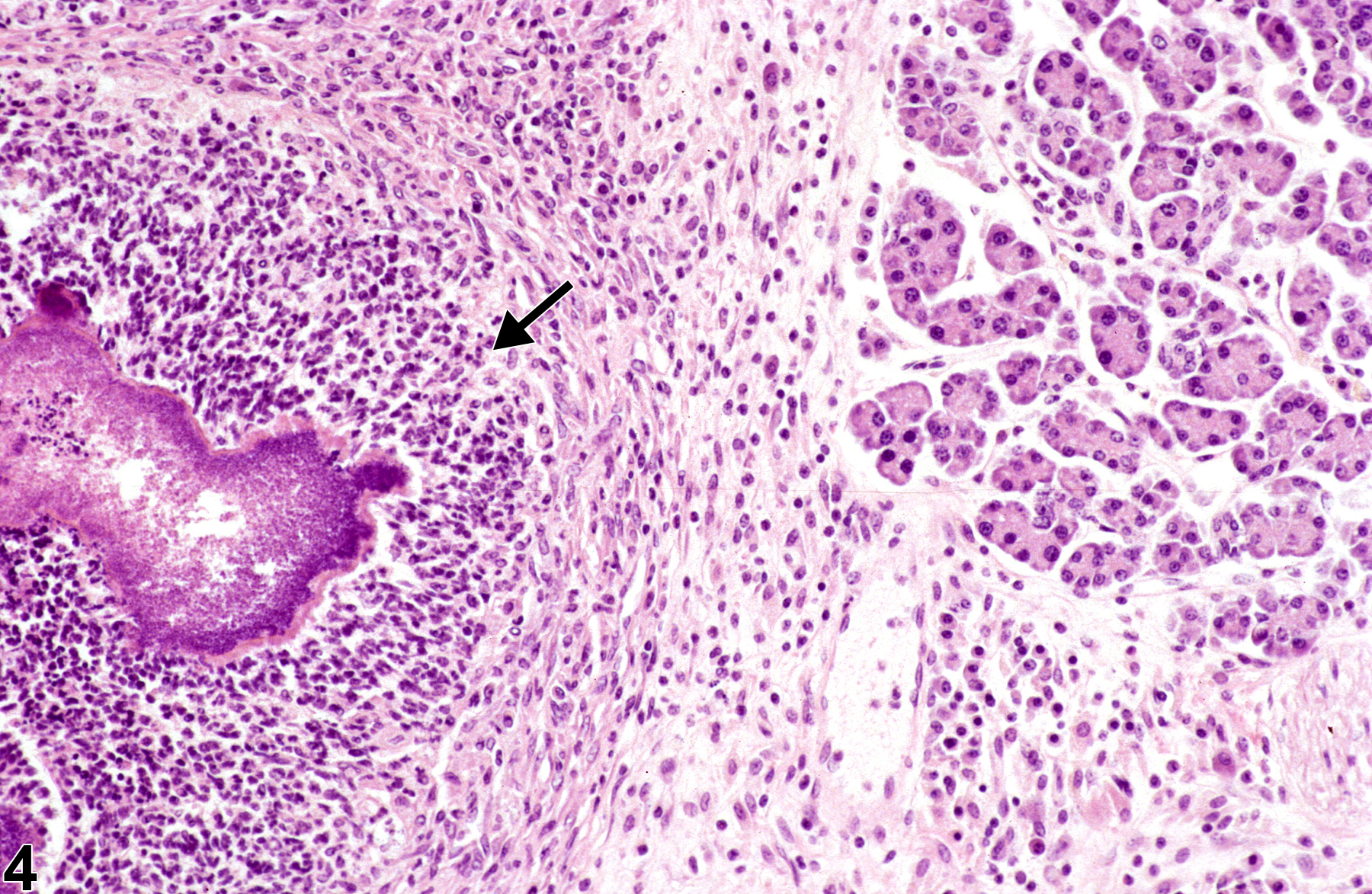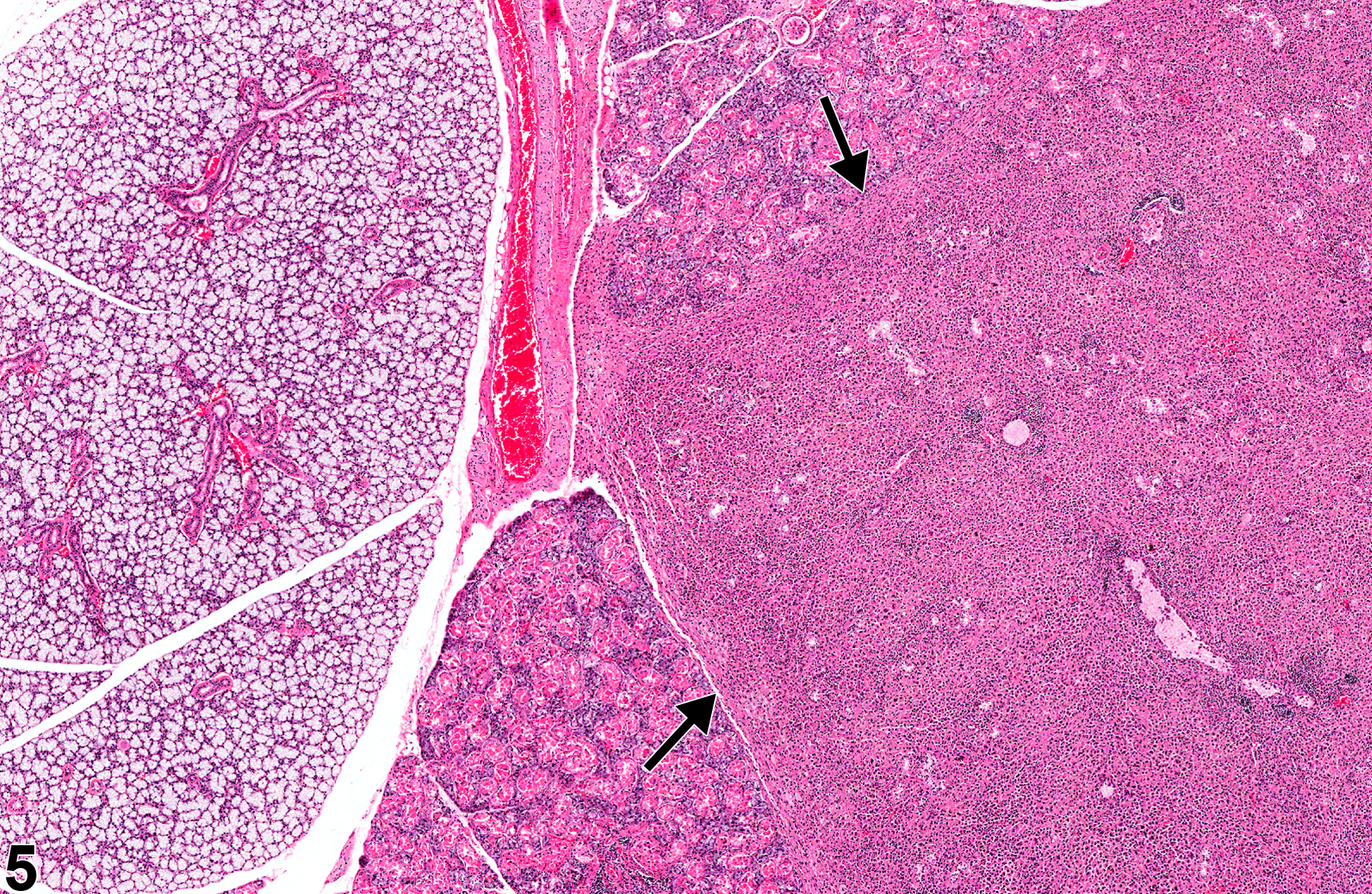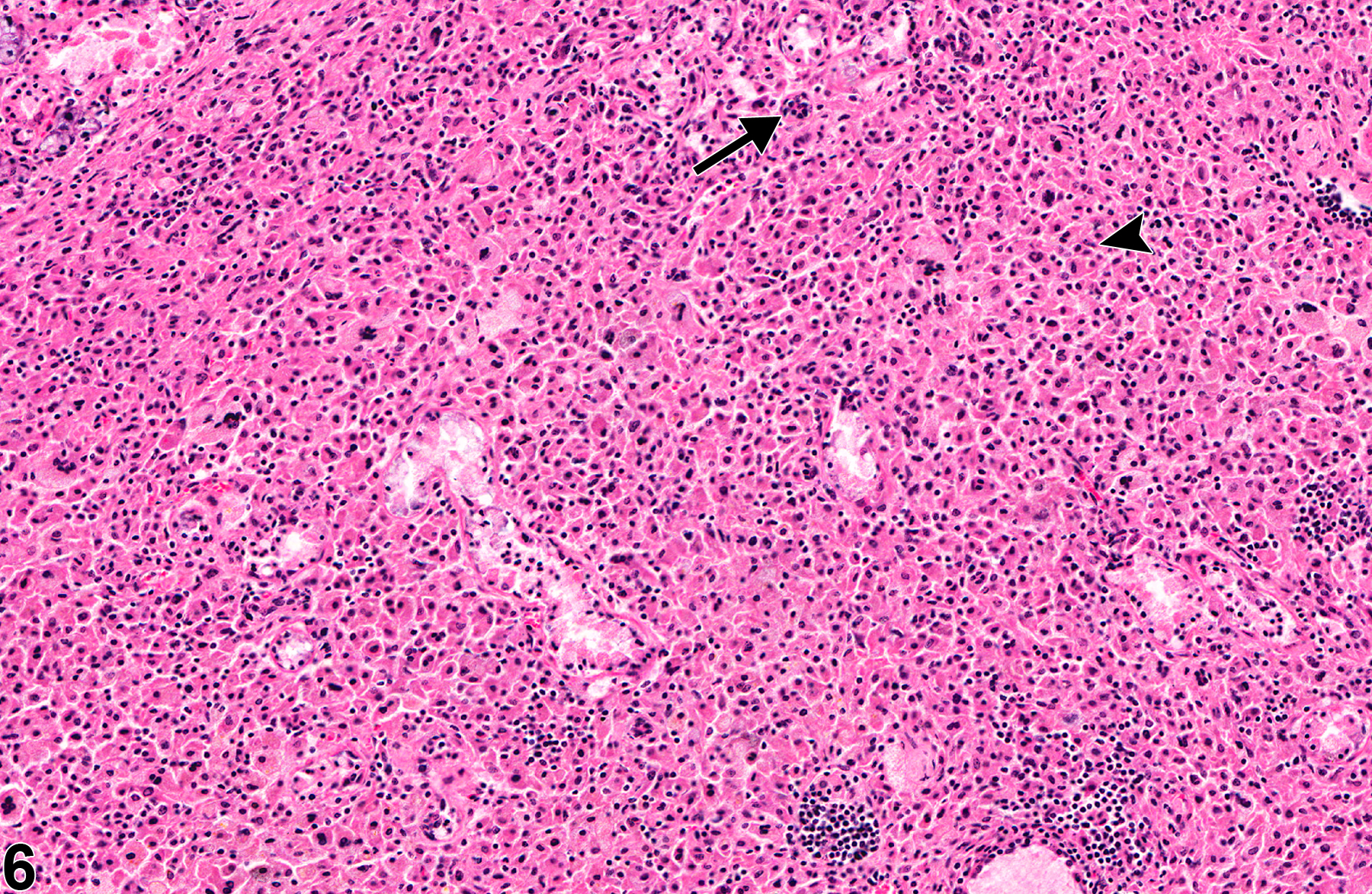Alimentary System
Salivary Gland - Inflammation
Narrative
Chronic inflammation can be seen in rats infected with sialodacryoadenitis corona virus, chronic infections with Klebsiella aerogenes, and immune-mediated sialoadenitis in mice. Sialodacryoadenitis virus (a corona virus) is the most important infectious agent affecting the salivary glands of rats (mice are not susceptible) because of its potential to compromise the interpretation of toxicologic studies. The virus, which mainly affects the submandibular and parotid salivary glands, causes gross enlargement of the glands, necrosis of both acinar and ductular epithelium, and marked inflammation. The sublingual salivary glands are not generally affected. In the acute phase, a neutrophilic infiltrate is associated with the necrosis, but later the infiltrates consist predominantly of mononuclear cells (chronic inflammation).
Ackermann MR. 2007. Chronic inflammation and wound healing. In: Pathologic Basis of Veterinary Disease, 4th ed (McGavin MD, Zachary JF, eds). Mosby, St Louis, MO, 153-191.
Arseculeratne SN, Panabokke RG, Navaratnam C, Weliange LV. 1981. An epizootic of Klebsiella aerogenes infection in laboratory rats. Lab Anim 15:333-337.
Abstract: https://www.ncbi.nlm.nih.gov/pubmed/7043077Botts S, Jokinen M, Gaillard ET, Elwell MR, Mann PC. 1999. Salivary, Harderian, and lacrimal glands. In: Pathology of the Mouse (Maronpot RR, ed). Cache River Press, St Louis, MO, 49-80.
Neuenschwander SB, Elwell MR. 1990. Salivary glands. In: Pathology of the Fischer Rat (Boorman GA, Montgomery CA, MacKenzie WF, eds). Academic Press, San Diego, CA, 31-42.
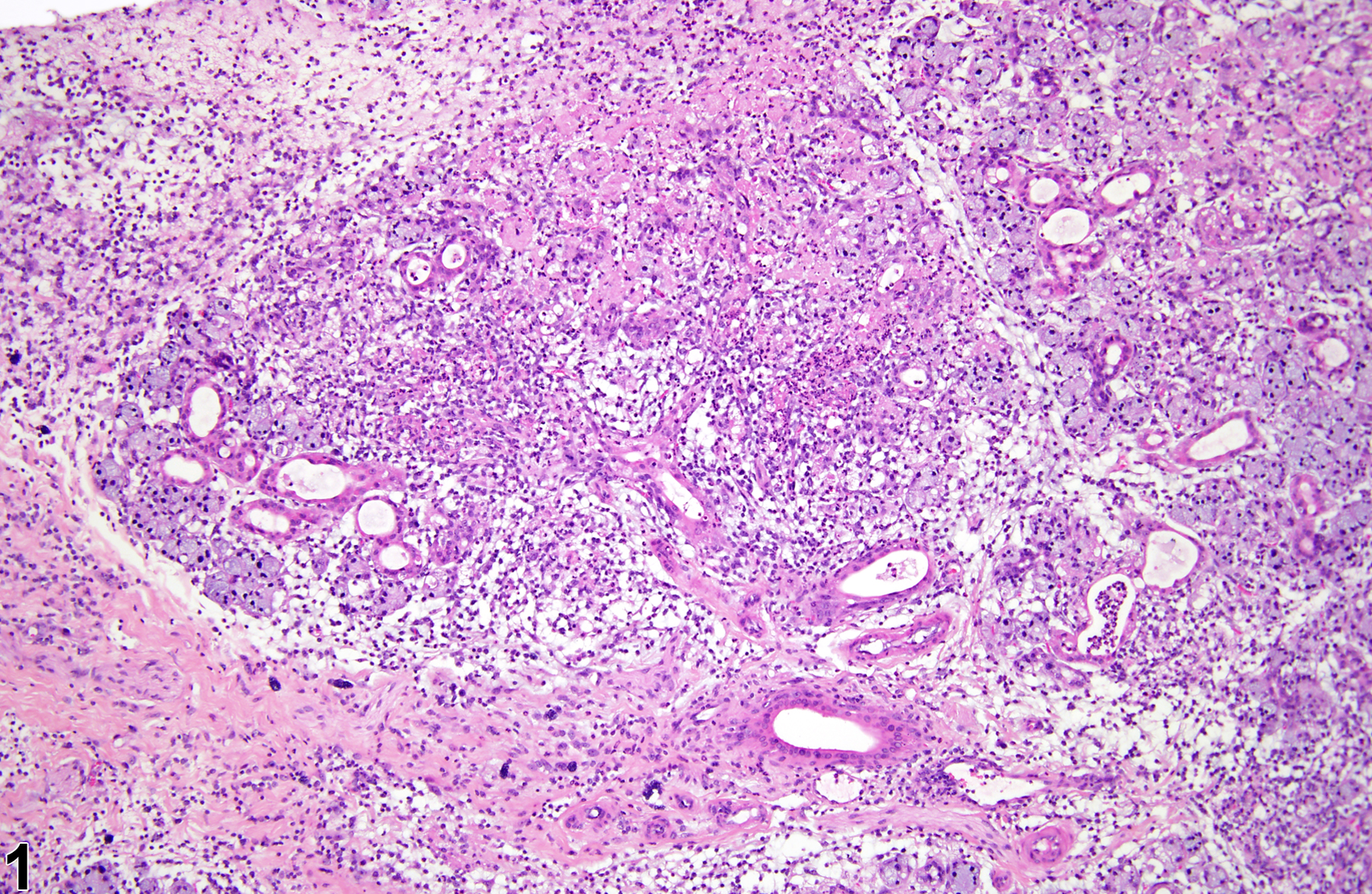
Salivary gland - Inflammation, Acute in a male F344/N rat from a subchronic study. There is widespread destruction of the salivary tissue with abundant inflammatory cells.



